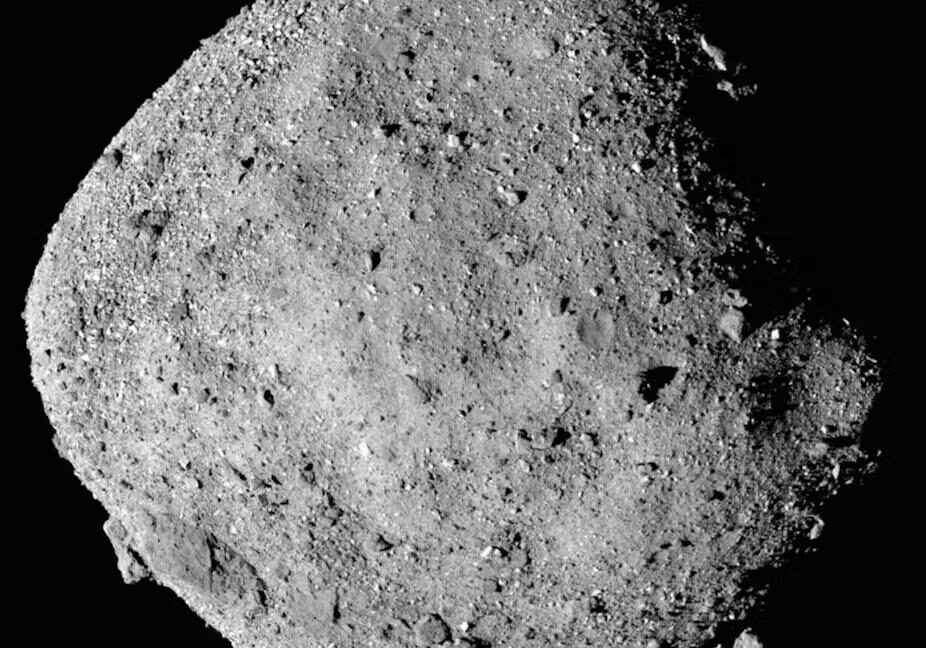Inside Trump’s purge at the agency that saves millions of lives
The US Agency for International Development (USAID) is not, in the scheme of things, a big part of the federal government. It dispersed $43.8 billion in the last fiscal year. That adds up to just 0.7 percent of the $6.1 trillion federal budget. USAID isnt even a full Cabinet agency, but a subset of the State Department.But USAID is worth paying attention to, both because it does important work that belies its size and status, and because its become an early case study in how the second Trump administration plans to dismantle major parts of the federal bureaucracy. On his first day back in office, Donald Trump signed an executive order placing a 90-day freeze on all foreign aid spending, a week before issuing a similar order affecting most of the rest of the federal budget. Secretary of State Marco Rubio took implementing the order seriously and issued stop-work orders for essentially all foreign aid on Friday. The pause was sweeping, including life-saving programs like PEPFAR, which provides AIDS drugs and preventative services to tens of millions of people. More than a week after Trumps first order, Rubio signed a partial waiver for humanitarian aid, including some AIDS drugs.Despite the orders questionable legality, sources in the agency tell me USAID staff largely complied. Nonetheless, the Trump team initiated a crackdown: About 60 senior leaders in the agency not political staffers, who usually leave when presidential administrations transition, but career civil and foreign service employees were placed on administrative leave on Monday. Acting Administrator Jason Gray explained the move in an all-staff email to USAID by citing several actions within USAID that appear to be designed to circumvent the presidents executive orders and the mandate from the American people. He did not cite any specific actions.In response to a request for comment, a USAID spokesperson wrote to Vox: We arent going to comment on personnel matters. We are judiciously reviewing all the waivers submitted and have a process in place to ensure urgent humanitarian aid continues. In line with the Presidents E.O. and to execute the implementation of the 90-day foreign assistance pause, several contracts have been paused to include personal services contracts (PSCs). These actions were not terminations or furloughs. These actions allow for a thorough and transparent review of the expenditure of all taxpayer dollars per the Presidents E.O. and Secretary Rubios guidance. There have been no furloughs, no termination of contracts or personnel under the foreign aid freeze E.O.While USAID may not comment on personnel matters, others say the consequences of putting these leaders on leave could be immense. This would lead to the destruction of US foreign assistance as we know it, Jeremy Konyndyk, a former veteran USAID official and current president of Refugees International, said in an interview. Thats probably something they want.Even this, though, was not the end of Trumps changes to the agency. So far he has also hit USAIDs contractor workforce, and his Office of Personnel Management has made USAID civil service staff vulnerable to reclassification and removal under so-called Schedule F moves.Disrupting USAIDs operations could quite literally cost people their lives. To pick one example, it is the primary implementer for the Presidents Malaria Initiative, which funded 36.8 million bednets and 48 million doses of malaria-preventing medication in 2023 alone; even with specific waivers, programs like this have been badly disrupted and lost crucial implementing staff.But this isnt just a story about USAID, but about a strategy that the Trump team is beta-testing there for disrupting the functioning of government agencies in general.Step 1: Pull the fundingTrumps Day 1 executive order was clear: All department and agency heads with responsibility for United States foreign development assistance programs shall immediately pause new obligations and disbursements of development assistance funds to foreign countries and implementing non-governmental organizations, international organizations, and contractors pending reviews of such programs for programmatic efficiency and consistency with United States foreign policy. It stated that the pause would be enforced by the Office of Management and Budget (OMB) through whats called apportionment.Apportionment is a usually quarterly process in which OMB allocates funds from yearly Congressional appropriations to specific agencies. In a normal administration, this is a mere formality meant to ensure that appropriated funds are not spent too quickly. But Trump is trying to use it to block the spending of congressionally appropriated funds altogether.This is part of a more general strategy called impoundment, previously attempted by Richard Nixon and the first Trump administration and roundly rejected by the courts as illegal. Trumps nominee to be OMB director, Russ Vought, and Mark Paoletta, his OMB general counsel, have vocally argued that the president has the power to withhold congressionally appropriated funding at will, so long as they do not spend in excess of what Congress appropriated. The Impoundment Control Act of 1974 passed by Congress explicitly states that they do not have this power, and courts have ruled that even before that law, this power did not exist. But the Trump team still insists that the law is unconstitutional and the court precedents are wrong.So far, the courts are holding to their view. On Tuesday evening, US District Court Judge Loren AliKhan issued a preliminary injunction temporarily blocking the freeze on federal grants; it did not explicitly address foreign aid and its implications there are unclear. On Wednesday, OMB rescinded its memo placing a freeze on all federal grants, though White House press secretary Karoline Leavitt claimed this didnt represent a policy reversal, but rather a clarification on Trumps executive orders.But initially, the order did in fact stop disbursements from USAID. The agency primarily works through implementing partners: for- and nonprofit contractors, nongovernmental organizations, and local government partners in developing countries that actually provide services for which USAID provides funding and/or technical assistance. The orders block to funds to foreign countries and implementing nongovernmental organizations, international organizations, and contractors thus effectively shut down USAIDs work entirely, according to multiple people working at the agency last week. If that were not clear enough, on Friday, Rubio issued a cable ordering employees to ensure that, to the maximum extent permitted by law, no new obligations shall be made for foreign assistance. So USAID couldnt fund its existing programs, and couldnt fund new ones.Step 2: Pull the peopleVolunteers at the Zanzalima Camp for Internally Displaced People unload aid delivery from USAID on December 17, 2021, in Bahir Dar, Ethiopia. J. Countess/Getty ImagesThe first time Trump was president, he tried to cut back on foreign aid spending too not through these impoundment moves, but through his budget proposals. But Congress rejected the cuts each time.This time, he brought back some of his political appointees from his first term, but with a new attitude. This new set of people feel like career government servants impeded their ability to pursue their vision of a MAGA agenda, Konyndyk observes.Multiple current and former USAID officials with knowledge of the situation cited Peter Marocco, the new head of the State Departments Office of Foreign Assistance (which oversees USAID), as the key mover on foreign aid so far this term. Marocco was reportedly in the Capitol during the January 6, 2021, insurrection, and served in the agency during Trumps first term, when his team issued a blistering 13-page dissent memo arguing he was incompetent and actively undermining their effectiveness.Consistent with a feeling of frustration with career staff, then, was the decision of USAID, under Maroccos supervision, to place roughly 60 senior officials on paid administrative leave on Monday evening. The leaders placed on leave span the majority of USAID bureaus; most staff at the agency headquarters in Washington, DC, reported to one of them, through one avenue or another, according to an official with knowledge of the list of people placed on leave. Notably, the Office of the General Counsel saw several leave notices, including two senior attorneys focused on ethics, according to three individuals with knowledge of the situation.Do you know how many people collectively are under the direct reporting lines of 60 career senior executive service staff and senior foreign service staff? one of the officials placed on leave asked me rhetorically. Some of them had dozens if not hundreds of people in their reporting lines, the official said, and the list seemed to include the vast majority of senior civil and foreign service staff at the deputy assistant administrator, senior deputy assistant administrator, or acting assistant administrator levels in DC.Acting Administrator Gray himself is a member of the senior executive service and not a Trump appointee, but he works under Maroccos authority.Adding to the disruption was the dismissal of the agencys institutional support contractors (ISCs). Devexs Elissa Miolene has reported that in the Bureau of Humanitarian Assistance, which handles USAIDs response to disasters like famines and earthquakes, ISCs have all been furloughed, meaning a 40 percent cut to the Bureaus workforce. An ISC in another bureau confirmed to Vox that they received furloughs too. While formally privately employed, these workers sit at USAID desks in the Ronald Reagan Building like any other staffer and are fully integrated into their team. Removing them amounts to a sudden, unplanned-for staffing reduction.As of this past September, some 13,215 people worked at USAID, of whom 2,578 were institutional support contractors, and 1,061 were personal services contractors (another major contractor category). Over one-fourth of the agency, in other words, are contractors, who under a stoppage of all foreign aid contracts cannot be paid. Much of the rest of the agency reported to career officials who are now on indefinite leave.Meanwhile, the 1,886 civil service staffers at the agency will have lesser protections under a memo promulgated Monday by the Office of Personnel Management. It enforces another Day 1 executive order that creates a new Schedule Policy/Career in the excepted service for positions that are of a confidential, policy-determining, policy-making, or policy- advocating character. Agencies are instructed to review their staffing and move any roles of this character into the new schedule, where civil servants can be dismissed more easily. Trump tried to do this in 2020, shortly before losing reelection, calling the new set of positions Schedule F; it appears to have been renamed Schedule Policy/Career.So any civil service officials still at USAID run the risk of being rescheduled to this new category, potentially setting them up for future dismissal. I cannot think of a civil servant at USAID that would not fit under the sweeping terms of it, a senior career official told me.More immediately, the administration has asked agencies for lists of career staff who are still within one-year probationary periods, making them easier to dismiss than longer-served staffers. This creates an implicit threat for USAID staff in this category: If they displease the administration for whatever reason, their probationary status can be invoked against them.Step 3: Instill fearPerhaps the most important function of the shock-and-awe campaign of funding freeze and mass administrative leaves has been to put the rest of USAIDs workforce on notice.If what youre trying to do is downsize an agency that you feel is bloated in a responsible way, you dont push out the 60 most senior staff and send home all the contractors who make the agency work, Konyndyk says. Those arent things you do if your concern is government effectiveness and efficiency. Those are things you do if you are trying to create an atmosphere of intimidation.The atmosphere included, per reporting by the Washington Posts John Hudson, removing all pictures of aid programs from the USAID headquarters; photos from the office show empty picture frames, with photographs of USAID staff and those benefiting from US foreign aid removed:The USAID staff I spoke with were mostly unwilling to be quoted due to fear of retaliation, and all of them described an atmosphere of uncertainty, unease, and omnipresent fear that one could lose ones job at any moment. This is not an environment in which one can imagine an agency of any kind operating effectively.As of this writing, the Trump administration has walked back its budget offices call for a total shutdown on government grants. But the January 20 executive order ordering impoundment of foreign aid has not been rescinded. One potentially dangerous endpoint here is that the administration reverses course on impoundment in general, while quietly continuing to withhold funding for specific programs, like foreign aid or clean energy. That is likely to provoke less backlash but as USAID is learning already, it has the potential to grind important government functions to a halt regardless.Youve read 1 article in the last monthHere at Vox, we're unwavering in our commitment to covering the issues that matter most to you threats to democracy, immigration, reproductive rights, the environment, and the rising polarization across this country.Our mission is to provide clear, accessible journalism that empowers you to stay informed and engaged in shaping our world. By becoming a Vox Member, you directly strengthen our ability to deliver in-depth, independent reporting that drives meaningful change.We rely on readers like you join us.Swati SharmaVox Editor-in-ChiefSee More:











